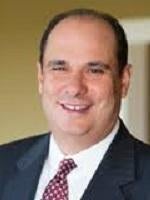In a decision concerning the so-called “25 percent rule” and “the entire market value rule,” the Federal Circuit in the case of Uniloc USA, Inc. et al. v. Microsoft Corp., Nos. 2010-1035, -1055 (Fed. Cir. Jan. 4, 2011), affirmed the U.S. District Court for the District of Rhode Island’s grant of a new trial on damages on the improper use of the entire market value rule. The Rhode Island District Court allowed Uniloc’s damages expert to proffer testimony on the 25 percent rule, which he did in addition to proffering testimony on the entire market value rule. The jury awarded Uniloc damages of $388 million based on the testimony of Uniloc’s damages expert. On appeal, the Federal Circuit reviewed the propriety of the 25 percent rule, the application of the entire market value rule, and the excessiveness of the jury’s damages award.
Plaintiff Uniloc asserted claims of U.S. Patent No. 5,490,216 (the ’216 patent) against defendant Microsoft Corporation. The ’216 patent relates to a software registration system designed to deter copying of software by allowing the software to run without restrictions only if the system determines that the software installation is legitimate. Microsoft was accused of infringement by way of its Product Activation feature that acts as a gatekeeper to Microsoft’s Word XP, Word 2003, and Windows XP software programs. The feature requires the user to enter a 25-character alphanumeric product key contained within the packaging of Microsoft’s retail products. After entering a valid key, the user is asked to agree to Microsoft’s End User License Agreement, after which the licensor-licensee relationship is initiated.
The district court denied Microsoft’s pre-trial motion in limine seeking to exclude Uniloc’s expert’s trial testimony using the so-called 25 percent rule. In denying Microsoft’s motion in limine, the district court found that the 25 percent rule had been widely accepted in patent infringement cases. The district court judge noted that “the concept of a ‘rule of thumb’ was perplexing in an area of the law where reliability and precision are deemed paramount,” but rejected Microsoft’s request to exclude the 25 percent rule because the rule has been widely accepted. The district court thus considered Uniloc’s expert’s use of the “25 percent rule of thumb” to be reasonable. The district court, however, agreed with Microsoft regarding a second damages issue. Namely, the district court agreed that the Uniloc’s expert’s use of the entire market value rule as a “check” was improper because the allegedly infringing feature of Microsoft’s accused software products was not shown to be the basis of consumer demand for the accused products. The district court, therefore, granted Microsoft’s posttrial motion for a new trial on damages.
The Federal Circuit discussed Daubert v. Merrell Dow Pharm., Inc., 509 U.S. 589 (1993), a seminal U.S. Supreme Court case on the issue of using expert testimony, which assigned the responsibility to district courts to ensure that “all expert testimony must pertain to ‘scientific, technical, or other specialized knowledge’” under the Federal Rules of Evidence. As a result, the Federal Circuit rejected the 25 percent rule. Specifically, it held that “the 25 percent rule of thumb is a fundamentally flawed tool for determining a baseline royalty rate in a hypothetical negotiation” and, furthermore, held that evidence relying on the rule is inadmissible under Daubert and the Federal Rules of Evidence “because it fails to tie a reasonable royalty base to the facts of the case at issue.”
The Federal Circuit, after striking down the 25 percent rule, reviewed Uniloc’s damages expert’s application of the entire market value rule. It reaffirmed that “[t]he entire market value rule allows a patentee to assess damages based on the entire market value of the accused product only where the patented feature creates the ‘basis for customer demand’ or ‘substantially create[s] the value of the component parts.’” Because it was undisputed that the accused Product Activation feature did not create the basis for customer demand, the Federal Circuit affirmed the district court’s ordering of a new trial on damages.
The Federal Circuit found that use of the entire market value rule by Uniloc’s expert as a “check” was improper. For the entire market value rule to apply, “‘the patentee must prove that the patent-related feature is the basis for customer demand.’” During the district court trial, after having heard Uniloc’s damages expert testify about the entire market value of the accused products being $19 billion, the jury was instructed that it could not, however, award damages based on Microsoft’s entire revenue from all the accused products in the case. Nonetheless, “[a]s the district court aptly noted, ‘[t]he $19 billion cat was never put back into the bag.’ Because “the entire market value of the accused products has not been shown to be derived from the patented contribution,” its consideration here by the jury at the district court was in “clear derogation of the entire market value rule.” Therefore, “the district court did not abuse its discretion in granting a conditional new trial on damages for Uniloc’s violation of the entire market value rule.”
A copy of the slip opinion can be found at: http://www.cafc.uscourts.gov/images/stories/opinionsorders/10-1035.pdf.






 />i
/>i

